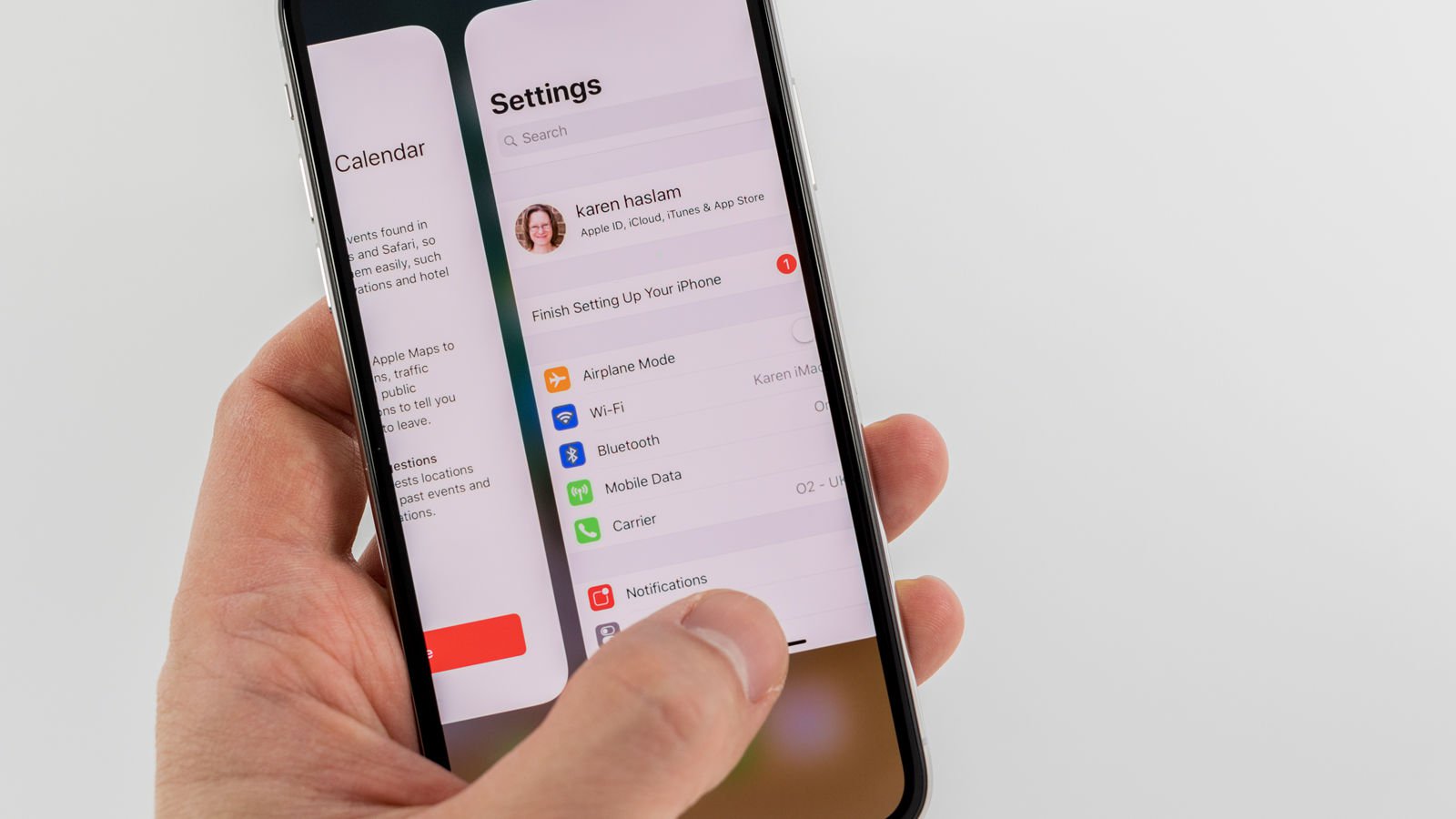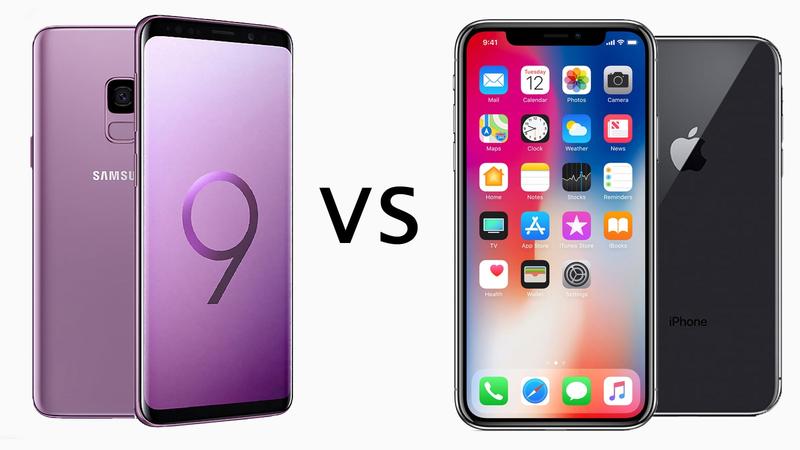Since not every phone buyer is entirely loyal to one brand, you may be wondering whether now is the time to switch to Android, or iOS if you’re already an Android user.
Samsung has launched the Galaxy S9 and S9+, successors to last year’s S8 models. Apple launches its phones in September, although the iPhone X didn’t go on sale until November so has only been out for a few of months.
Price & Availability
Everyone knows how much the iPhone costs, because it was the first phone to cost £1000/US$1000. Well, you’ll get £1/US$1 change from that, but it’s still the most expensive production smartphone yet.
That’s just the base model of course. If you want 256GB rather than 64GB (and who wouldn’t?) then it costs £1149/US$1149. You can buy it from Apple as well as mobile operators and high street stores.
See the best iPhone X deals for more.
Samsung’s Galaxy S9 comes in two sizes (like the iPhone 8). The smaller one has a 5.7in screen – almost the same as the iPhone X and costs £739/US$719. If you want a bigger screen, the S9+ has a 6.2in display and costs £869/US$839.
That means both are cheaper than Apple’s flagship, and it’s the same if you get them on contract rather than buying outright.
Check out the best Galaxy S9 deals.

Features and design
The iPhone X represents the 10th anniversary model and has a brand new design with an almost bezel-less display. It’s a huge leap from the dated iPhone 8 and is considerably smaller than the iPhone 8 Plus despite its larger screen.
Samsung has merely tweaked the design of the S8, moving the fingerprint sensor to a more sensible location beneath the camera on the S9, but in most respects it’s hard to tell them apart at a glance.
Although that sounds like a criticism, it isn’t. The S8 was already nearly the perfect Android phone and the S9 simply serves to creep even closer to that unobtainable standard.

Aside from the bigger screen on the S9+, the more expensive model also gets two rear cameras, just like the iPhone 8 Plus (and iPhone X of course). It also has 128GB rather than 64GB of storage, so you’re getting more for your money.
The only frustration is if you’d rather have the smaller screen, as you also lose out on those extra features. It’s one reason why we like Google’s philosophy with the Pixel 2 and 2 XL: the only difference is the screen size.
This handy table shows at a glance how the main specs stack up against each other:
| Galaxy S9 | Galaxy S9+ | iPhone X | |
| Operating System | Android 8.0 Oreo | Android 8.0 Oreo | iOS 11 |
| Display | 5.8in Quad HD+ (2960×1440) 18.5:9 SuperAMOLED Infinity Display | 6.2in Quad HD+ (2960×1440) 18.5:9 SuperAMOLED Infinity Display | 5.8in Super Retina Display (2436×1125, 458ppi) OLED |
| Processor | Exynos 9810 octa-core | Exynos 9810 octa-core | Apple A11 Bionic, M11 co-processor |
| Memory | 4GB RAM | 6GB | Not stated |
| Storage | 64GB (expandable up to 400GB via microSD) | 128GB (expandable up to 400GB via microSD) | 64GB/256GB |
| Primary Camera | 12Mp f/1.5-2.4 camera with OIS | 12Mp f/1.5-2.4 camera with OIS + 13Mp telephoto camera | 12Mp wide-angle, f/1.8 with OIS + 12Mp telephoto, f/2.4 with OIS |
| Front Camera | 8Mp | 8Mp | 7Mp |
| Video Recording | 4K @ 60fps, Super slo-mo 720p @ 960fps | 4K @ 60fps, Super slo-mo 720p @ 960fps | 4K @ 60fps, Slo-mo 1080p at 240fps, |
| WiFi | 11ac dual-band | 11ac dual-band | 11ac dual-band |
| GPS | Yes | Yes | Yes |
| Bluetooth | 5.0 with aptX | 5.0 with aptX | 5.0 |
| NFC | Yes | Yes | Yes, only for Apple Pay |
| Biometric authentication | Fingerprint scanner | Fingerprint scanner | FaceID |
| Wireless charging | Yes | Yes | Yes |
| Colours | Midnight Black, Coral Blue, Titanium Gray, Liliac Purple | Midnight Black, Coral Blue, Titanium Gray, Liliac Purple | Silver, Space Grey |
| Ports | USB-C, 3.5mm Headphone jack | USB-C, 3.5mm Headphone jack | Lightning |
| Waterproof | IP68 | IP68 | IP67 |
| Dimensions | 69x148x8.5mm | 73.8x158x8.5mm | 70.9×143.6×7.7mm |
| Weight | 163g | 189g | 174g |
| Battery | 3000mAh | 3500mAh | 2716mAh |
As you’d expect, they all have the most up-to-date versions of Wi-Fi, Bluetooth and LTE along with super-fast processors and great water resistance.
Samsung, unlike other phone makers, has kept the traditional headphone socket on both versions of the S9 and that’s sure to win over some buyers.
Both phones have stereo speakers
Screen
The iPhone X is the first from Apple to adopt an AMOLED display. However, unlike Samsung’s phones, colours remain natural and aren’t massively oversaturated. And Apple being Apple, there are no settings to change colour saturation to suit your preference.
What you get is accurate colours (handy when editing photos) and the True Tone feature which adjusts white balance to compensate for different types of lighting.

The Galaxy S9 has the expected vivid colours, high resolution and always-on display, which Apple – for some reason – decided against with the iPhone X. Instead, you can tap the screen to wake it and check the time and notifications.
Both phones have a certain wow factor. With the Galaxy S9, the curved screen edges and minimal side bezels make the screen look even bigger.
Love it or hate it, the notch on the iPhone is the only part where the screen doesn’t have a tiny bezel and – if you’re upgrading from an iPhone 6 or later – you’ll really notice the increase in screen-to-body ratio.

In terms of extra features, the iPhone X has 3D Touch while the S9 has Active Edge. Neither of these are deal-makers or breakers: they’re just additional ways of navigating around the operating system.
Cameras
Samsung and Apple have some of the best camera tech you’ll find on a phone, so it’s no surprise that both the Galaxy S9 and iPhone X take great photos and videos.

Both offer optical stabilisation for sharper photos in dim light and smooth, jerk-free video. They’ll also both record 4K video at 60fps.
Where they differ is that only the S9+ has the secondary camera for portrait shots with a blurred background, so arguably it’s that version which is the closest competitor to the iPhone X.
Interestingly, Samsung has introduced a variable aperture on the main 12Mp rear camera on the S9 and this means it can switch between f/1.5 and f/2.4 depending on the available light.

DXOMark has tested this extensively and given the S9+ a rating of 99 overall, two points more than the iPhone X.
The iPhone X has its 240fps slo-mo which it records at 1080p, but Samsung has followed Sony by adding a 960fps ultra-slo-mo which is captured in 720p.
Both Samsungs have the gimmicky AR Emoji which turns a selfie into an animated version of you which, from the tests we’ve done, don’t look much like you at all.
If we’re honest, we prefer Apple’s Animoji which take a handful of emojis and allow you to record a 10-second ‘video’ which uses the True Depth camera to transfer your facial expressions to the emoji. It’s still a gimmick, but one you’re likely to actually use on occasion.
Performance
With the latest processors in both phones, performance isn’t really in question. Apple’s phones tend to dominate in synthetic CPU benchmarks, but both the Galaxy S9 and iPhone X feel just as fast and responsive as each other in real-world use.
On the iPhone X, you really notice the extra performance on tap when creating videos from the Moments feature with Photos. Even an iPhone 7 Plus would take a couple of minutes to render and save a 90-second video. The iPhone X can do it in around half that time, so there are tangible benefits: we’ve not yet reached a performance plateau where new phones are no quicker than their predecessors.
Software
Comparing iOS to Android is possible, but somewhat pointless if you’re already a loyal user of one or other. In fact, it’s the software which can be the most compelling reason to stay with Android or iOS when upgrading your phone.
However, it is easier than ever to switch between the two and most of the apps you use are sure to be free ones so it isn’t an expensive exercise in having to re-purchase apps on the rival platform.
You can read our Android 8 Oreo vs iOS 11 comparison for more details, but suffice to say that iOS 11 on the iPhone X is excellent and it doesn’t take long at all to get used to the navigating without a home button or TouchID.

Samsung’s TouchWiz overlay doesn’t change Android fundamentally, so while some may still prefer ‘vanilla’ Android as you get on the Pixel 2 (or any AndroidOne phone) it isn’t difficult to live with TouchWiz.

The main problem with switching is that some accessories are compatible only with iOS or Android. So if you’ve got an Apple TV, say, you won’t be able to use AirPlay to beam photos and videos to it from a Galaxy S9.
It’s better the other way around: most Google services work fine on an iPhone.
